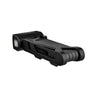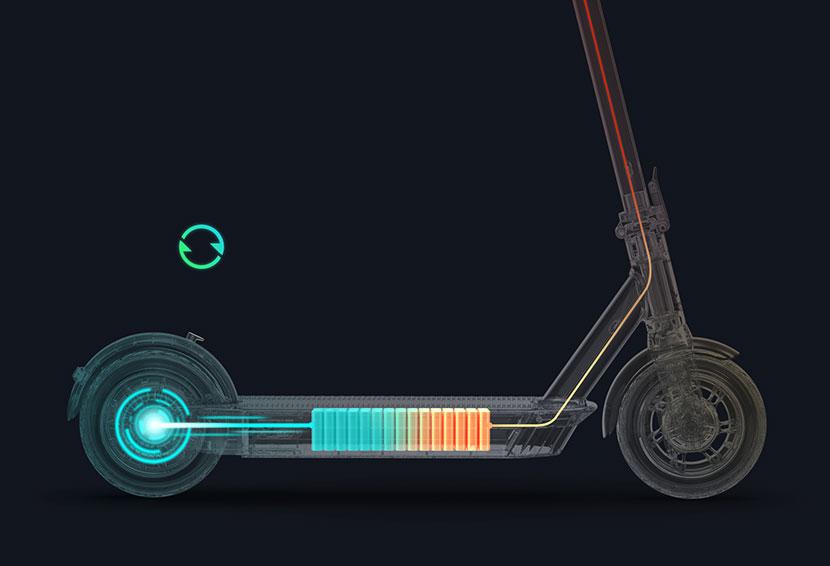The battery is one of the most important parts of your electric scooter. Think of it as its fuel, the thing that provides energy for your ride to move. Without a battery, your scooter won’t be going anywhere.
Unfortunately, most electric scooter batteries come with a hefty price tag so they’re not that easy to change. The best thing to do is to maximize your battery’s performance and take care of it to increase its lifespan.
It’s good news then that there are simple ways to keep your battery well-maintained and working optimally. Some common, minor issues regarding your scooter’s battery can even be troubleshot at home. Read on to learn more about electric scooter battery maintenance.
Types of Batteries Used in Electric Scooters
Lithium-Ion
Lithium-Ion batteries are the most commonly used batteries in electric scooters nowadays. That’s because there are actually many battery chemistries under Li-ion. Some of these are Lithium manganese oxide, Lithium iron phosphate, Lithium cobalt oxide, and more.
But the reason why many electric scooters feature a Li-Ion battery is because of its high energy density. Energy density is the among of energy that a battery can store depending on their weight.
Li-Ion batteries are also known for their longevity as they can maintain their capacity through many charging cycles.
Lithium Manganese
There are two types of Lithium Manganese batteries, the INR and NMC. Most electric scooters use INR which is among the safest battery chemistries today. It is also known for its high storage capacity and output current.
The manganese present in the battery helps maintain low temperature. The risk of overheating is minimal even with the high output current.
Lead Acid
Lead-acid batteries are among the most affordable batteries used today as it is and old chemistry. You can usually find these in cars and larger vehicles. But some inexpensive scooters still house this.
Though it is cheaper, the drawback of lead-acid batteries is their poor energy density. Li-Ion batteries can store ten times more energy than lead-acid.
Things to Look Out for When it Comes to Electric Scooter Batteries
Voltage and voltage sag
First and foremost, you must keep in mind that most electric scooters come with battery packs. A battery pack is made up of thousands of Li-Ion cells designed in a structure and maintained by a Battery Management System (BMS). Each individual cell in the pack is operated by volts.
Voltage sag is something that every battery experiences. This can be caused by different things like battery chemistry, temperature, etc. Sometimes adding a load to the battery will make the voltage drop, which might show as you losing battery capacity.
Voltage sage can also happen when you ride long distances as your battery will need to catch up with the discharge rate.
It’s not something to highly worry about as it works itself out in the end. For example, removing the load from your scooter will return voltage to its true level. And if you’re riding long-range, allowing the battery to rest for a while will put it back to its true voltage level.
Capacity ratings
The appropriate battery capacity on electric scooters will depend on the type of ride you need. Typically, entry-level and commuter scooters have lower battery capacities as they have slower speeds and shorter range. A battery with 250Wh is usually enough for short commutes.
More powerful commuter scooters and extreme electric scooters require thousands of watt-hours for optimal performance since they go at faster speeds and significantly longer ranges.
Battery brands
Battery brands can affect the performance of your scooter because branded batteries have better quality control. Brands to look out for are LG, Samsung, Dynavolt and Panasonic among others.
Generic batteries, mostly manufactured in China, are usually featured in budget and less powerful commuter scooters. While they will work well, quality wouldn’t always be on par with its branded counterparts.
Some companies, like Xiaomi and Segway, use generic Chinese batteries but have good quality control measures that can help ease your mind. This means they can still provide great, dependable performance even without branded batteries.
Battery management system (BMS)
A Battery Management System (BMS) helps maintain a battery pack and controls its charging and discharging. The system prevents unwanted situations like overcharging, overheating, and the like by cutting off or putting on power to the battery depending on the situation.
Common Electric Scooter Battery Problems & How to Fix This
There are a few reasons why your scooter might not be charging. And while it can be a battery issue, sometimes it’s as easy as changing your charger. Here are common scenarios to look out for:
Charger Used
Make sure that you are using the charger that came with the scooter. Mixing up chargers is a common occurrence if you have more than one scooter in the household. Not all electric scooters, even if they come from the same brand, use the same type of charger.
To avoid mix-ups, clearly label your chargers and use it only with the right electric scooter.
Faulty Charger
Plug in your charger to the outlet and check for the light. If there is no green light glowing, take out your voltmeter or multimeter and test for your charger’s voltage output. If the voltage reads 0 or less than your battery’s supposed voltage, you’ll need to buy a new one.
Faulty Battery
Open up the deck and check the battery for any leaks. If there are no physically visible problems, use a voltmeter to test the battery’s voltage. If the voltage is low, replace the battery.
Old Battery
If you noticed that the charger lights up green quicker than before, your battery might be getting old. Continue to charge the battery to full charge (manually keep time for this, instead). Then, test your scooter to see if it still reaches top speed and maximum range.
You must remember that as batteries age, they also lose their voltage. So if your battery can’t provide enough juice to power your scooter, it’s time to replace it.
How to Check Charging Status Using a Voltmeter
When you think that your battery isn’t performing at its best, you can actually check it out at home yourself before having it serviced. A simple check using a voltmeter can tell you if your battery might need replacement or not.
A simple way to do this is to charge your scooter first, for about 7 to 8 hours or until full charge (100%). Then turn off your scooter, and make sure to immobilize it. If you want to place it atop something so that it doesn’t move when you turn it on, do so.
Then, get your voltmeter and set it to DC Volts V or 200 on VDC. Connect the probes to the battery pack terminals and read the voltage.
Turn the scooter on, press the throttle a few times, and read the voltage again. You will want your scooter to display a voltage rating equal to or near the manufacturer’s voltage. If it’s lower by 2V or more, you might need to replace your battery.
If you need a visual step-by-step guide to help you use a voltmeter, there are many videos in YouTube that can help you out.
Common Questions About Electric Scooter Batteries
How long do batteries last?
In general, an electric scooter battery can last from one to three years. But, in reality, the lifespan of your battery is affected by numerous factors.
Some things that can affect your battery life are:
- How you charge your battery
- How you ride
- Your weight or the load often on the scooter
- How regularly you maintain your electric scooter
- How often you use your electric scooter
- Where you park or store your electric scooter
- Whether you ride while raining/on wet surfaces
Rough riding, improper storage, improper recharging, and not maintaining your scooters can significantly shorten your battery’s lifespan. But the good news is that modern BMS helps keep your battery running optimally and can even prolong battery life.
Additionally, mindful riding practices can also go a long way in ensuring better battery lifespan.
How often can you charge a battery in a day?
This highly depends on your battery capacity, charging time, and length of rides. If you have a short-range scooter and you need to travel long distances, you’ll need to recharge your scooter more than once a day. Long-range scooters can be recharged less if you can make it to and from your chose destinations with the remaining battery charge.
But as a general guide, it’s a good habit to charge your electric scooter after every ride so you can ensure that you have enough juice for your travels. Just make sure to let your scooter cool down for a few minutes before recharging.
Can batteries be overcharged?
Yes, they can. Although most batteries now come with battery management systems that prevent overheating, there are times where it might fail. Overcharging your battery can kill and can be dangerous. At best, your battery might just swell and fail to work. At worst, it might explode.
Modern chargers have automatic shutdown functions that minimize the risk of overcharging. But that’s still not a foolproof plan.
The best way to prevent this is to stick to the manufacturer’s charging time. It’s also a good idea to constantly keep an eye on your scooter while it’s charging. If you find the charging going hot, unplug it and let it cool off.
How can you lengthen battery life?
In general, electric scooter batteries are durable and require very little maintenance. But you can’t change the fact that prolonging your battery’s life depends highly on how you use your scooter and how you take care of it as well. Don’t worry, most of these are easy to do.
Here are some things to remember to help lengthen your battery’s life:
- Before your first ride, give your scooter a big charge (make sure it reaches 100%). This helps set your battery levels.
- Store or park your e-scooter in cool (but not freezing) places, like the garage or inside the house during winter. Covering it in a tarp during cold weather is beneficial as well.
- When the battery is full, unplug it from the charger to avoid overheating and overcharging.
- Don’t charge your electric scooter directly after a ride. Let it cool down for a few minutes.
- Don’t let your battery run out completely. Re-charge often.
- If you haven’t used your e-scooter for a long time, use a tender charger for your battery to avoid overcharging.
- Don’t ride on puddles and avoid riding when it’s raining
Can you replace electric scooter batteries? Are they worth the cost?
Yes, they can be replaced. But electric scooters can be pricey. How worth it they are can depend on the battery model you’re looking for (the brand and how easy it is to find). Some batteries come with a heavy price tag, that it might be better to check out a brand-new scooter than to get a battery replacement.
Useful Electric Scooter Battery Tips
Charge Your Battery Regularly
A good habit to make is to keep your electric scooter’s battery fully charged. This way, you won’t get a nasty surprise of having it stop moving in the middle of your commute. It’s a good idea to charge your battery up to 100% after every ride.
Regular recharging can also extend your battery’s lifespan as it affects charging cycles less. A charging cycle happens when you drain your battery fully then re-charge it to full capacity. And an electric scooter battery has a finite number of charging cycles. By not draining your battery, you’re allowing it to retain its ability to hold a full charge for longer.
Recharge at the right times
You should know when the right time to recharge your battery is. Charging it directly after a short ride is fine. But if you’ve been riding for more than 30 minutes, let your electric scooter cold down for half an hour before charging it.
If you’ve ridden a lot during the day, don’t let your battery stay discharged for too long. Make sure to recharge it as soon as it cools down.
Use the Original Charger
Generic chargers are one of the most tempting accessories you can purchase, but it’s better not to succumb. While it might seem like a cheaper option, you just never know how compatible they are with your battery. And that can lead to more expenses if your battery needs to be replaced.
As a rule of thumb, it’s always better to get an original charger even if they are expensive. Guaranteed, they are more affordable than a new battery.



